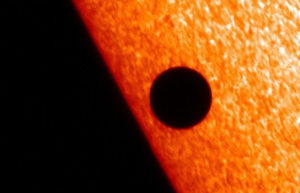The newly found "Super-Earth" named HD 40307g, is much closer than the other HD 40307 planets discovered orbiting its star.
A team led by Mikko Tuomi from the University of Hertfordshire claims that the position of the planet is just right for existence of water but needs to ensure the temperature is neither too hot nor cold for life to survive, according to The International Business Times.
This new planet is one of the three other planets discovered, but it is only 42 light years away from earth, which makes it likely that in the future scientists will be able to fully examine the planet and locate it using telescopes.
Hugh Jones, the author of the study from the University of Hertfordshire in England in a press statement: "The longer orbit of the new planet means that its climate and atmosphere may be just right to support life. Just as Goldilocks liked her porridge to be neither too hot nor too cold but just right, this planet or indeed any moons that it has lie in an orbit comparable to Earth, increasing the probability of it being habitable."
Astronomer Steven Vogt, with the University of California's Lick Observatory, wrote in an email to Discovery News: "All we know at this point is that it has a minimum mass of about 7.1 Earth-masses. We have no explicit follow-up planned, thought the HARPS team is probably still gathering more data, and may in the future be able to confirm these results, and perhaps add even more planets to the brood."
According to a report in Discovery News, there's no proof that would prove that the sixth planet HD 40307g is a "rocky world." It was also discovered that it may receive 62 percent of radiation from sun that Earth receives. "Even though the radiation is somewhat low compared to that received by the Earth, we note that the Earth lies actually reasonably close to the inner boundary of the sun's habitable zone," the scientists wrote.
© 2025 HNGN, All rights reserved. Do not reproduce without permission.








